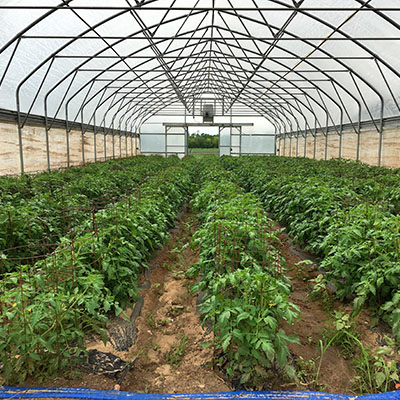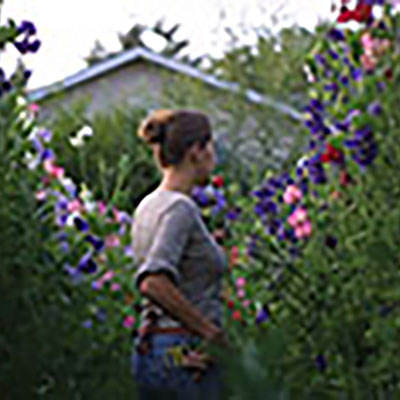Growing for Market in partnership with Johnny's Selected Seeds has created a library of expert information about growing and selling vegetables and flowers. Links in the article will take you to johnnyseeds.com.
Subscribe to Growing for Market for more great ideas about growing and marketing!
For more topics in the series, click on Market Farming Basics in the left column.

![]()
Taking care of tomatoes
If you’re like most growers, tomatoes are one of your most important crops, either because you make the most money from them or because your customers demand them. Such an essential crop deserves special treatment to enhance flavor, appearance, and yield. The best way to improve your tomatoes is to prune and train them. Here’s why.
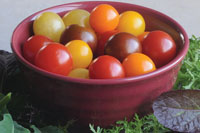
Pruning tomatoes
First, please note that this information applies only to indeterminate tomato varieties. Determinates should NOT be pruned because pruning will reduce yield.
Indeterminates, however, will grow until killed by frost, always dividing their energy between vegetative growth and fruit production. Appropriate pruning reduces vegetative growth to the minimum required for plant health, thereby increasing the energy available for flowering and fruiting. Pruned tomatoes produce larger fruits that ripen earlier, sometimes by as much as two weeks. Pruning also helps prevent foliar diseases because it reduces crowding and touching of leaves. Too much pruning, however, can result in fruits with sunburn, catfacing, and blossom end rot.
Indeterminate tomatoes are vining plants with many branches. Pruning reduces the number of branches to one, two, or several main branches or “leaders” which will ideally be about the same size. This is accomplished by removing side shoots or “suckers” that grow in the leaf axils between leaves and the stem. Here’s how it’s done:
If you want just one leader, remove all the leaves and side shoots below the first flower cluster. As the plant grows, continue to remove all suckers from the leaf axils.
If you want two leaders, which is often recommended in case the main stem is damaged, leave one sucker directly below the first flower cluster. Prune all other suckers that grow on both stems.
For plants with three or four leaders, leave the first sucker or first two suckers above the first flower cluster. After that, prune off all new suckers.
The suckers should be removed when they are 2-3” long. In most cases, they will snap off when bent, although if the plant is wilted they may need to be pruned off with pruners or a razor blade. Pruning should be done about every week to 10 days to stay ahead of sucker development. If this task gets away from you and suckers get too long, you should pinch or cut off the growing tip of the sucker, leaving a few leaves behind, rather than trying to remove the entire shoot, which would create a wound close to the main stem and make it more vulnerable to disease.
For more information, see Johnny’s video “How to Prune Tomatoes.” http://www.growingwisdom.com/index.aspx?pid=9&sid=1&cid=341
Training systems
Opinions vary about the best way to prune and train indeterminate tomatoes, with four primary strategies used by commercial growers:
Sprawl or ground culture involves neither pruning nor staking. Plants are left growing on the ground or on plastic mulch.
Cage systems involve pruning the plants to three or four leaders and confining them inside a cage.
Stake and Weave or basket weave requires plants to be pruned to one or two vines, and supported by twine strung between stakes beside every other tomato plant.
Trellis systems require plants to be pruned to two leaders that are tied to twine hanging from a wire stretched overhead.
Each system has advantages and disadvantages. Oklahoma State researchers compared the four systems and found that trellis culture, with the plants pruned to two leaders, resulted in the earliest and largest tomatoes and the best pest control. However, fruit cracking and sunburn were problems. Cage production resulted in the largest marketable yield, but ranked lower in earliness, fruit size, fruit cracking and rotting, and pest control. Ground culture was the worst in almost all measures. The system that seemed the best balance between yield and quality was Stake and Weave.
For more information, see "Training Systems and Pruning in Organic Tomato Production" by Oregon Tilth.
For information, read article on training hoophouse tomatoes in the Catalog Extras section of JohnnySeeds.com
Better Tasting Tomatoes
For a long time, growers have assumed that tomato flavor depended on the variety, with some influence from the weather that year. But recent research shows that flavor may be enhanced by growing practices and soil amendments. Growing for Market recently reported on three strategies reputed to improve the flavor of tomatoes. So far, there's no conclusive research about these practices, just interesting ideas that might be worth trying yourself on a few plants. You can read the article here.
Visit Johnny's Selected Seeds for more free information about growing produce, herbs, cover crops and flowers.
• Subscribe to Growing for Market for the latest news and ideas.
Reprinted from JSS Advantage June 2010
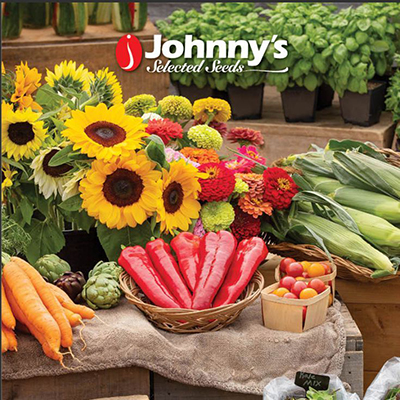
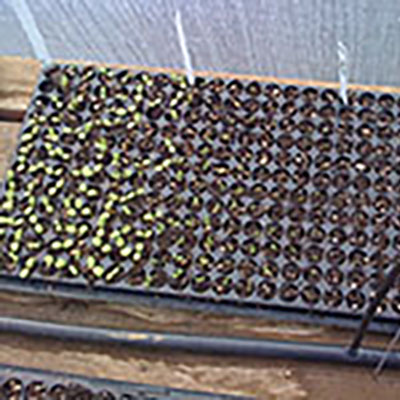

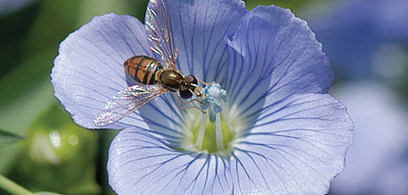 Insect pollination is essential to many vegetable and fruit crops, including tomatoes, squash, pumpkins, watermelons, blueberries, blackberries, apples, almonds, and many others. In the case of watermelons, there will be no fruit without pollination. Some vegetables don't require pollination to set fruit, but pollination by bees will result in larger and more abundant fruits. Nearly 75% of the flowering plants on Earth rely on pollinators to set seed or fruit, as well as one-third of our food crops, and most pollination is performed by honey bees, native bees, and other insects.
Insect pollination is essential to many vegetable and fruit crops, including tomatoes, squash, pumpkins, watermelons, blueberries, blackberries, apples, almonds, and many others. In the case of watermelons, there will be no fruit without pollination. Some vegetables don't require pollination to set fruit, but pollination by bees will result in larger and more abundant fruits. Nearly 75% of the flowering plants on Earth rely on pollinators to set seed or fruit, as well as one-third of our food crops, and most pollination is performed by honey bees, native bees, and other insects. 